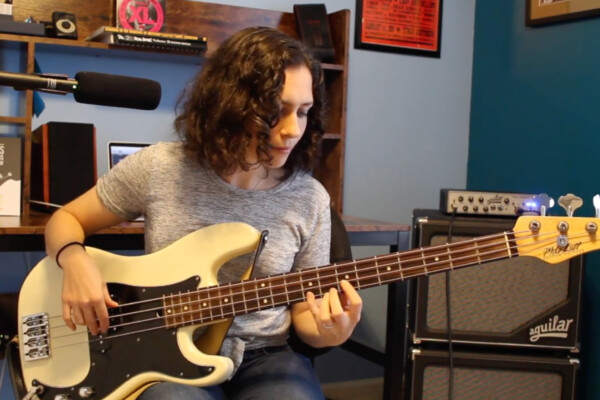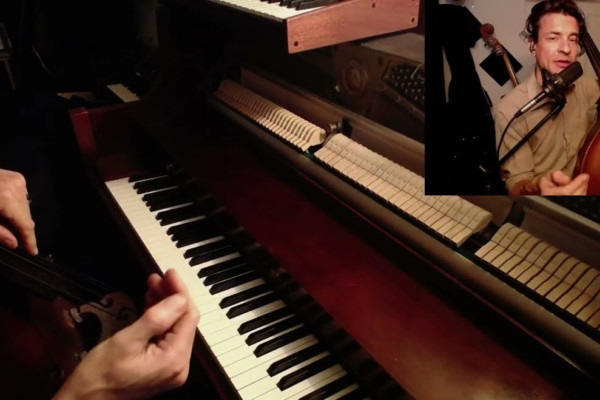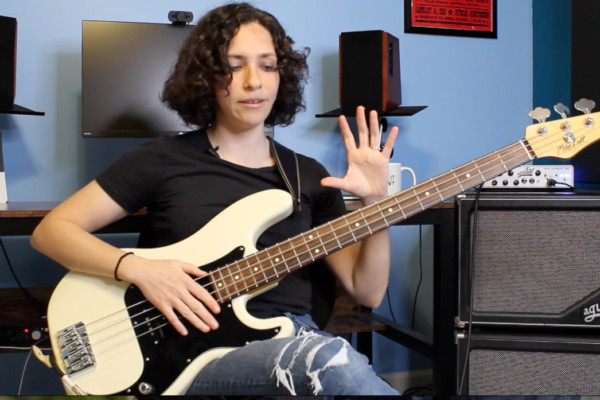Ask Damian Erskine: Chord Voicings
Q: Can you help me get away from the standard root position chords that I already know?
A: Hopefully, yes!
The following will presume an intermediate level of understanding of chords and basic theory. But, if you’re working on this stuff, you’ve probably already got at least enough of a grip on it to follow along. Give this a shot!
It is a rite of passage of sorts into a new realm of harmony and hearing that most other instrumentalists are exposed to from the beginning… that of rootless harmony.
While I am guilty myself of being much more comfortable with my root position chord shapes, I have been getting better at straying from my root shapes when voicing through a set of changes by altering my perspective in one key way.
Instead of looking at each chord and thinking “What voicing do I know that I can play here??” I have been instead comparing each upcoming chord with the chord I am currently playing.
In other words, I am thinking of every note available to me and contrasting where I am going with where I am. If in moving from a D-7 to a G7, I’ve got my D in the bass from the D-7, I then think “Why move it? It’s about to become the 5th of the next chord… keep it where it is!”
If one note in the voicing won’t jive with the next chord, you can usually move it up or down a half step to make it fit the harmony.
I’ve attached a PDF here with various voicings along with my own form of tab so you can see how I’m fingering these chords. I wrote it for a 6-string bass, but you can alter the strings you’re playing on to fit a 4 or 5 (although you may have to raise the lowest note an octave up for a 4 string for some of these).
Here’s an additional exercise for you to get you thinking through chords and what notes are available to you (Remember: this stuff is supposed to be hard at first. That’s how you know you’re learning!)
An interesting exercise to get yourself away from your shapes is to work through a tune and..
- Start with whatever shape you want for the 1st chord
- Every time you move to a new chord, only change what notes HAVE to change to fit the new chord (don’t worry about playing roots, etc… just play the notes you have and move as little as possible through a set of changes. You get some very guitaristic voicings that way…(no roots on a lot of em’)
For example, in a ii-V-I in CMaj:
D-7 | G7 | CMaj7
if you start with a basic D-7 shape of 3 notes on the same fret:
D on the A string
C on the G string and
F on the C string (with a 6 string)
F
C
x
D
(the ‘x’ is just there because you won’t play that string… trying tab in a text file.)
Looking at each voice, one-by-one…
The F works for both D-7 and G7, so it can stay. The C won’t work for G7, so just move it as little as possible so it works (down to B or you could go up to a C# for a #11)
and the D works for G7. so you can play both of those chords by only moving one note a half step!!
Then do the same for the Cmaj7. Keep doing it through an entire tune!
D-7 | G7 | C?7___________________________F | F | EC | B | BxxxxxxxxxxxxxxxxxxxxxxxxxxxD | D | C
Have a question for Damian Erskine? Send it to [email protected]. Check out Damian’s instructional books, Right Hand Drive and The Improviser’s Path.




[…] (whatever) bars and practice different things over the chord changes. This is also when having some chord shapes together really comes in handy.A second idea may be to work on your ears. Janek Gwizdala told me […]